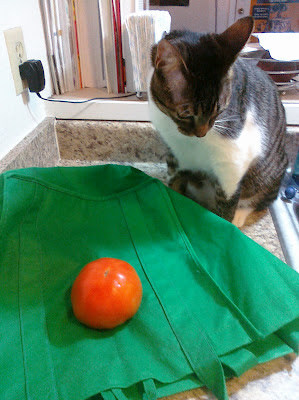Our first simple step to a more sustainable life is very easy, and over time saves you money.
Buy Reusable Sandwich Bags
If you're handy with a sewing machine or needle, you could easily make some of these yourself. I prefer the zippered ones, but velcro is also an option. You can buy them off various "green" product websites, or etsy. And as you see above, they can be kind of cute.
Here's How It Helps: When you send your kid to school with apples or take a sandwich for your lunch, what do you do with the plastic bag? You throw it out. That plastic bag was made to be disposable. It will serve it's purpose once (maybe twice if you reuse it), and then it will sit in a landfill. Plastic doesn't seem to biodegrade, or at least, none of it has yet. By using cloth sandwich and snack bags, you eliminate the need to buy and throw away plastic. This saves you money and saves the landfills, not to mention the added benefit of reduced factory waste in the production of plastic.
Here's How To Do It: Buy a bag or two to start. If you tend to take snacks to work, buy a bag that would fit the size of what you need. Buy a few bags for your kid's lunch boxes. You can get plenty that are big and roomy for a nice sandwich and others that are smaller for grapes or chips. After you use the bag, you wash it and use it again. Many of these bags are machine washable, but I find that for most of the time, mine just need a quick rinse in hot water then I lay them on the dish rack to dry.
Cost: The bags vary in cost, usually about $2-3 per bag and then go up for larger bags, zippers, different patterns, etc. Unless you buy these at a craft fair or a local store, you will also need to pay shipping. However, keep in mind that once you buy these, you will only need to buy more when they wear out. I've had some of mine for months now and they look practically new. When you buy disposable plastic bags, you have to buy new ones every couple of weeks and you're throwing that money away.
So friends, that's today's simply step. Whether you live by yourself, with a family of ten, or in your mom's basement, anyone take this simple step to a more sustainable life!















